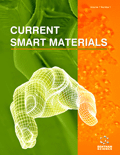Abstract
Background: The conventional hydraulic dampers have limited adaptability to the variation frequency and amplitude of incident load for minimisation of the transmissibility to the structures. The active type dampers have the limitations in terms of power pack requirement and stability of control. Therefore the semi active dampers of ER/MR type are attractive contenders for the design of dampers.
Method: An overview of ER/MR damper designs and modelling has been presented with an introduction to underlying principles and the key technological challenges. The overview of designs of ER/MR dampers envisages Poiseuille flow type, Couette type and multitube dampers in a morphological manner. As per the published works the optimisation methodology of damper actuators is presently based on volume constrained optimisation. The overview of modelling techniques covers phenomenological models and fluid dynamics models.
Results: The phenomenological models predict the damper behaviour with good accuracies however the review paper emphasises the need for further research on transient model as the model gives a closer agreement with the experimental results. Some of the phenomenological models are based on fitting piecewise functions to the experimental data for predicting force velocity damper response. Such models pose difficulty in terms of determining inverse model for the control of ER/MR damper. The stability of phenomenological models in direct and inverse mode for high speed applications needs to be explored.
Conclusion: The transient model with improved solution techniques and modelling of body forces can accurately predict the damper response at all operating speeds. The quasi-static and transient models are amenable for their application in direct and inverse mode.
Keywords: Dampers theorem, multitube damper, phenomenological models, Poiseuille flow and Couette flow type damper, quasi static flow model, transient flow model.
Graphical Abstract
 24
24 1
1




